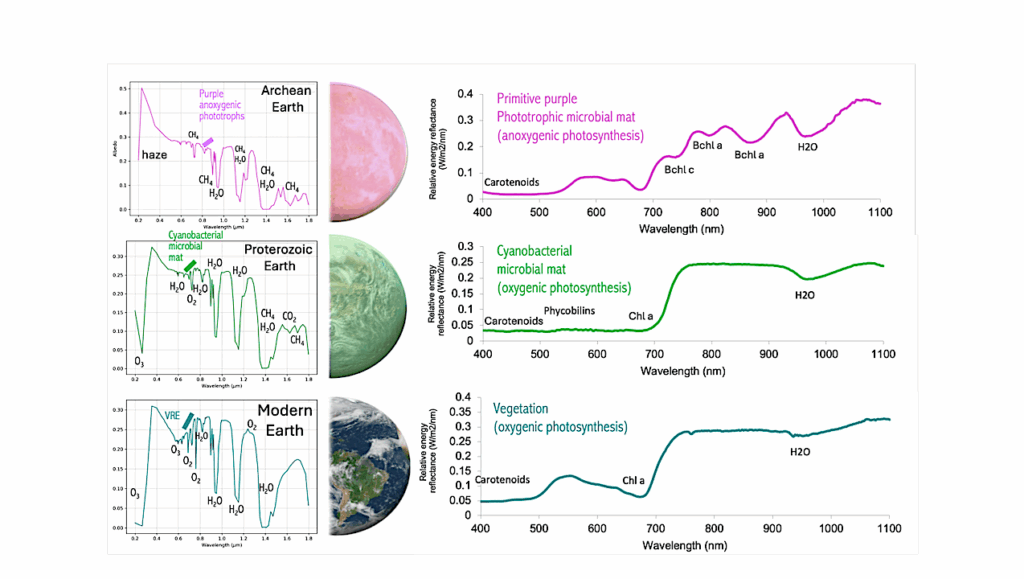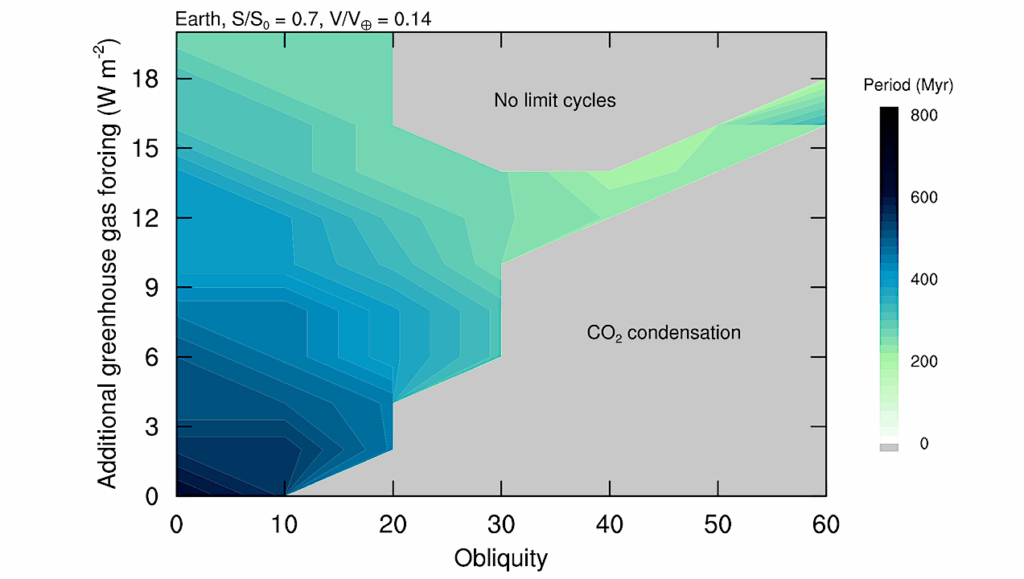Hubble Observes The Atmosphere Of Exoplanet WASP-121 b Changing Over 3 Years

The Jupiter-sized planet WASP-121 b is no place to call home. For starters, it orbits very close to a star that is brighter and hotter than the Sun. The planet is so dangerously close to its star that its upper atmosphere reaches a blazing 3,400 degrees Fahrenheit – hotter than a steel blast furnace.
A torrent of ultraviolet light from the host star is heating the planet’s upper atmosphere, which is causing the magnesium and iron gas to escape into space. Powerful gravitational tidal forces from the star have altered the planet’s shape so that it appears more football shaped. By combining several years of Hubble Space Telescope observations with computer modelling, astronomers have found evidence for massive cyclones swirling on the hellish planet. The cyclones are repeatedly created and destroyed due to the large temperature difference between the star-facing side and dark night-time side of the exoplanet.
By combining several years of observations from NASA’s Hubble Space Telescope along with conducting computer modelling, astronomers have found evidence for massive cyclones and other dynamic weather activity swirling on a hot, Jupiter-sized planet 880 light-years away.
The planet, called WASP-121 b, is not habitable. But this result is an important early step in studying weather patterns on distant worlds, and perhaps eventually finding potentially habitable exoplanets with stable, long-term climates.
This video shows the temperature forecast spanning 130 exoplanet-days, across sunrise, noon, sunset and midnight, for the exoplanet WASP-121 b, also known as Tylos.The brighter yellow regions depict areas on the day side of the exoplanet where the temperature soars well above 2000 Kelvins because of its close proximity to its host star, roughly 2.6% of the distance between Earth and the Sun. Owing to the extreme temperature difference between the day and night sides, astronomers suspect evaporated iron and other heavy metals escaping into the higher layers of atmosphere on the day side partially fall back onto lower layers, making it rain iron on the night side. Some of the heavy metals also escape the planet’s gravity from the upper atmosphere. It only takes WASP-121 b roughly 30 hours to complete an orbit around its star.
For the past few decades, detailed telescopic and spacecraft observations of neighboring planets in our solar system show that their turbulent atmospheres are not static but constantly changing, just like weather on Earth. This variability should also apply to planets around other stars, too. But it takes lots of detailed observing and computational modelling to actually measure such changes.
To make the discovery, an international team of astronomers assembled and reprocessed Hubble observations of WASP-121 b taken in 2016, 2018 and 2019.
They found that the planet has a dynamic atmosphere, changing over time. The team used sophisticated modelling techniques to demonstrate that these dramatic temporal variations could be explained by weather patterns in the exoplanet’s atmosphere.
This video shows the weather patterns on the exoplanet WASP-121 b, also known as Tylos. This video has been slowed down to show the patterns in the exoplanet’s atmosphere in more detail.
The team found that WASP-121 b’s atmosphere shows notable differences between observations. Most dramatically, there could be massive weather fronts, storms, and massive cyclones that are repeatedly created and destroyed due to the large temperature difference between the star-facing side and dark side of the exoplanet. They also detected an apparent offset between the exoplanet’s hottest region and the point on the planet closest to the star, as well as variability in the chemical composition of the exoplanet’s atmosphere (as measured via spectroscopy).
The team reached these conclusions by using computational models to help explain observed changes in the exoplanet’s atmosphere. “The remarkable details of our exoplanet atmosphere simulations allows us to accurately model the weather on ultra-hot planets like WASP-121 b,” explained Jack Skinner, a postdoctoral fellow at the California Institute of Technology in Pasadena, California, and co-leader of this study. “Here we make a significant step forward by combining observational constraints with atmosphere simulations to understand the time-varying weather on these planets.”
“This is a hugely exciting result as we move forward for observing weather patterns on exoplanets,” said one of the principal investigators of the team, Quentin Changeat, a European Space Agency Research Fellow at the Space Telescope Science Institute in Baltimore, Maryland. “Studying exoplanets’ weather is vital to understanding the complexity of exoplanet atmospheres on other worlds, especially in the search for exoplanets with habitable conditions.”
WASP-121 b is so close to its parent star that the orbital period is only 1.27 days. This close proximity means that the planet is tidally locked so that the same hemisphere always faces the star, in the same way that our Moon always has the same side pointed at Earth. Daytime temperatures approach 3,450 degrees Fahrenheit (2,150 degrees Kelvin) on the star-facing side of the planet.
The team used four sets of Hubble archival observations of WASP-121 b. The complete data-set included observations of WASP-121 b transiting in front of its star (taken in June 2016); WASP-121 b passing behind its star, also known as a secondary eclipse (taken in November 2016); and the brightness of WASP-121 b as a function of its phase angle to the star (the varying amount of light received at Earth from an exoplanet as it orbits its parent star, similar to our Moon’s phase-cycle). These data were taken in March 2018 and February 2019, respectively.
“The assembled data-set represents a significant amount of observing time for a single planet and is currently the only consistent set of such repeated observations,” said Changeat. The information that we extracted from those observations was used to infer the chemistry, temperature, and clouds of the atmosphere of WASP-121 b at different times. This provided us with an exquisite picture of the planet changing over time.”
Hubble’s unique capabilities also are evident in the broad expanse of science programs it will enable through its Cycle 31 observations, which began on December 1. About two-thirds of Hubble’s time will be devoted to imaging studies, while the remainder is allotted to spectroscopy studies, like those used for WASP-121 b. More details about Cycle 31 science are in a recent announcement.
The Hubble Space Telescope is a project of international cooperation between NASA and ESA. NASA’s Goddard Space Flight Center in Greenbelt, Maryland, manages the telescope. The Space Telescope Science Institute (STScI) in Baltimore, Maryland, conducts Hubble and Webb science operations. STScI is operated for NASA by the Association of Universities for Research in Astronomy, in Washington, D.C.
Astrobiology








